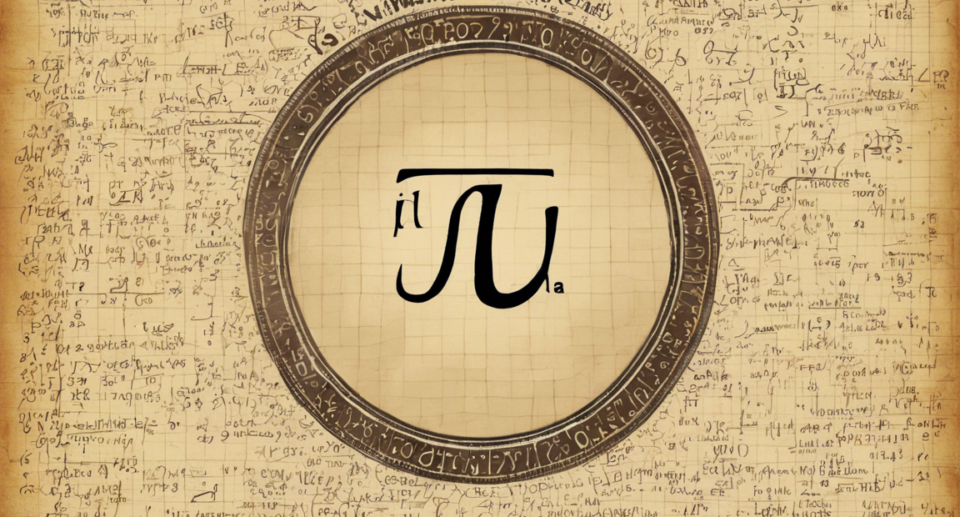Is Pi Rational? Exploring the Mathematical Mystery

Introduction
In the realm of mathematics, pi (π) is one of the most fascinating and enigmatic numbers. Defined as the ratio of a circle’s circumference to its diameter, pi is an irrational number, meaning it cannot be expressed as a simple fraction. This characteristic has made pi the subject of curiosity and intrigue for mathematicians throughout history. In this detailed exploration, we will delve into the concept of rationality in mathematics, uncover what it means for a number to be rational or irrational, and provide a comprehensive analysis of why pi is indeed an irrational number.
Understanding Rational and Irrational Numbers
Before we can comprehend why pi is irrational, it is crucial to grasp the fundamental concepts of rational and irrational numbers. In mathematics, a rational number is any number that can be expressed as the quotient or fraction of two integers, where the denominator is not zero. Rational numbers can be finite decimal numbers (such as 0.5) or recurring decimals (such as 0.333…). In contrast, an irrational number is a number that cannot be represented as a simple fraction and has an infinite, non-repeating decimal expansion. Famous examples of irrational numbers include the square root of 2 (√2) and Euler’s number (e).
Proving Pi’s Irrationality
The irrationality of pi was first proven by the mathematician Johann Lambert in 1768. Lambert demonstrated that pi is not only irrational but also transcendental, a more profound classification reserved for numbers that are not solutions to any non-zero polynomial equation with integer coefficients. The transcendence of pi means that it is not the root of any non-trivial algebraic equation, further emphasizing its mysterious and infinite nature.
To provide a glimpse into the intricacies of Lambert’s proof, consider a basic outline of the logic behind establishing pi’s irrationality. Suppose pi could be expressed as a fraction, where a and b are integers and b is not equal to zero:
π = a / b
Squaring both sides of the equation, we obtain:
π^2 = a^2 / b^2
By rearranging the equation, we have:
π^2 * b^2 = a^2
This equation suggests that a^2 is a multiple of (b^2)π^2, which contradicts the assumption that a and b are integers with no common factors. This contradiction signifies that pi cannot be rational and must, therefore, be irrational.
Historical Significance of Pi
The pursuit of understanding pi’s nature has captivated mathematicians and scholars for centuries. Ancient civilizations such as the Egyptians and Babylonians approximated pi to help calculate the areas of circles and construct architectural wonders. The symbol π for the ratio of the circumference to the diameter of a circle was first used by the mathematician Leonhard Euler in the early 18th century. From the ancient Machin formula to modern supercomputers calculating pi to trillions of digits, the exploration of pi has advanced alongside mathematical and computational developments.
Applications of Pi in Mathematics and Beyond
The significance of pi extends beyond geometry and mathematics, finding applications in various fields such as physics, engineering, and technology. In trigonometry, pi is crucial in defining sine and cosine functions and analyzing periodic phenomena. It also plays a vital role in probability theory, statistics, and calculus, influencing areas like Fourier analysis and number theory. Moreover, pi’s ubiquity in science and technology is evident in its utilization in algorithms, simulations, and even the encoding of digital images and sound.
Challenging Pi’s Digits: The Quest for Precision
The quest to calculate pi to as many decimal places as possible has been a driving force for mathematicians and computer scientists. From ancient mathematicians like Archimedes using polygonal approximations to modern algorithms like the Bailey–Borwein–Plouffe (BBP) formula enabling rapid computation, the pursuit of pi’s digits has pushed the boundaries of mathematical knowledge and computational power. As of now, trillions of digits of pi have been calculated, with supercomputers continually expanding this number in ongoing projects.
Conclusion
In conclusion, the irrationality of pi stands as a testament to the infinite and enigmatic nature of mathematics. Through rigorous proofs and historical exploration, mathematicians have unraveled the mystery of pi’s irrationality, showcasing the beauty and complexity of this fundamental constant. From ancient civilizations approximating pi to modern supercomputers calculating it to trillions of digits, the fascination with pi continues to drive mathematical inquiry and technological advancement. Whether pondering the transcendental nature of pi or utilizing its value in practical applications, the enduring allure of this mathematical constant reinforces its status as a cornerstone of mathematical thought.
FAQs
- Why is pi considered irrational?
-
Pi is considered irrational because it cannot be expressed as a simple fraction of two integers. Its decimal representation goes on infinitely without repeating, making it impossible to capture its exact value in a finite fraction.
-
Who first proved that pi is irrational?
-
The mathematician Johann Lambert was the first to prove the irrationality of pi in 1768, advancing mathematical knowledge and understanding of transcendental numbers.
-
What is the significance of pi in geometry?
-
In geometry, pi is essential for calculating the circumference, area, and volume of circles and spheres. It serves as a fundamental constant for trigonometric functions and geometric relationships.
-
How is pi utilized in real-world applications?
-
Pi finds applications in a wide range of fields, including physics, engineering, and technology. It is integral to mathematical modeling, signal processing, and scientific calculations, shaping advancements in various industries.
-
What is the current record for calculating pi’s digits?
-
As of the latest computations, trillions of digits of pi have been calculated using advanced algorithms and supercomputing technology. The ongoing quest for precision continues to expand the known digits of pi.
-
Can pi be computed to an exact value?
-
Due to its irrational and transcendental nature, pi cannot be computed to an exact value. Its decimal expansion never repeats or terminates, posing a challenge for exact representation in finite forms.
-
What is the difference between irrational and transcendental numbers?
-
Irrational numbers cannot be expressed as simple fractions, while transcendental numbers are a subset of irrationals that are not roots of any non-zero polynomial equation with integer coefficients. Pi is both irrational and transcendental.
-
How does the concept of pi impact mathematical research today?
-
The study of pi and its properties continues to influence mathematical research, computational algorithms, and number theory. Researchers explore new avenues to enhance our understanding of pi’s digits, transcendence, and applications in diverse fields.
-
Are there any open problems related to pi in mathematics?
-
While significant progress has been made in understanding pi, there are still unresolved questions and conjectures surrounding its properties. Ongoing research aims to address these open problems and delve deeper into the intricacies of this fundamental mathematical constant.
-
What role does pi play in calculus and analysis?
- In calculus, pi appears in the integration of trigonometric functions, polar coordinates, and geometric series. Its presence in Fourier analysis, Taylor series, and complex analysis underscores its importance in fundamental concepts of calculus and mathematical analysis.




